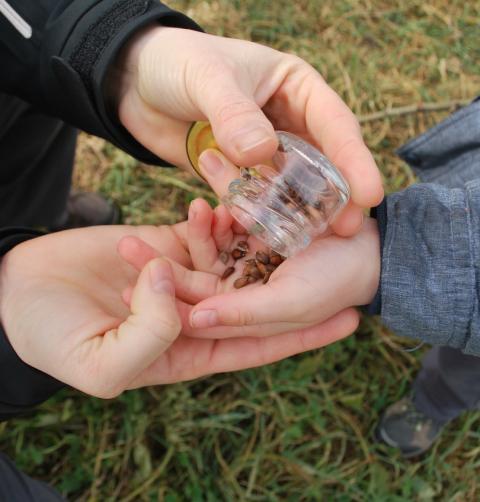Don't be idle this winter! – Plan for the 2018 garden!

It’s been a punishing winter in New Hampshire so far this season. Between repeated snow storms and frigid arctic temperatures, gardening has never felt further away. Over the last few weeks, I’ve often looked out the window and worried about how my plants are faring in the garden. I’m sure I’m not alone in wondering if the flower buds on my bigleaf hydrangeas will survive, or if I planted my new tree early enough for it to become established. While I will have to wait until spring to know the answer to these questions; there are thankfully a number of gardening to-dos I can tackle right now. Doing winter prep work is a great way to satisfy your itch to garden while also setting yourself up for a successful year of gardening when spring arrives.
Clean and Sharpen Tools
The winter is a great time to take stock of your gardening tools. Clean and sharpen all of your tools and plan to replace anything worn or broken. Doing this now ensures that you won’t waste any time in the spring. I like to spend extra time caring for my pruning tools, making sure they are in perfect working order by March. It is far easier to prune with sharp tools, and it is well worth taking the time now to clean and sharpen them. Not only will having sharp pruners reward you with easier cuts on your plants, but those cuts will heal better too. Dull pruning tools are prone to crushing or tearing stems and branches, increasing the likelihood of infection from disease organisms. Have your tools ready for the start of the dormant pruning season in late February and March.
Wash and Disinfect Plant Containers
If you plan to reuse plant containers, now is a good time to wash and disinfect them. Salt deposits from fertilizers are unsightly and clinging debris can harbor disease organisms that can spell disaster for plants. Warm, soapy water and a good stiff brush will remove most soil and mineral deposits. Disinfect containers by soaking them in a solution of one part bleach to nine parts water. Finish by rinsing with clean water. Although this is certainly not the most glamourous task, it is well worth the effort to help ensure you will have lush and healthy containers this season.
Design the Garden
Cold winter days are the perfect time to reflect on the successes and shortcomings of your garden in 2017. If you were diligent in taking garden notes last year, now is the time to refer to them. Did you have any disease or pest issues that could be prevented this coming season? Do you need to move some of your perennials to a sunnier or shadier location? Were you able to supply enough water to your garden, or should you consider planting drought tolerant species?
Devise solutions for the challenges in last year’s garden.
Many of the best gardens are those that are thoughtfully planned in advance. Designing a garden is the best way to show off your creativity and plant knowledge. For many people this is the most fun part of gardening. Pay close attention to the site characteristics of your yard and choose plants that are well suited to your growing conditions. Figure out what materials you will need in the coming season, be it hard goods, mulch, or new plants, so you can order early.
Order Seeds
This is also the time to start ordering seeds. Avid gardeners know that nothing gives you quite the same jolt of excitement as the arrival of seed catalogues. I’ve personally spent many cold winter days poring over pictures and descriptions of the flower and vegetable offerings for the coming year. I always make a point of ordering seeds from reputable northern, or better yet, New England companies. These plants will be better adapted to our climate, likely performing better than the alternatives. With high demand for some varieties, ordering early or as soon as possible ensures that you will receive the plants you want.
However, make sure you don’t start your seeds too early. The proper time to sow seeds depends on when they can be safely planted outside. Carefully read the label on the seed packets for planting instructions. Plants that are started too early will often be leggy as they likely won’t receive enough light or the right temperatures to thrive.